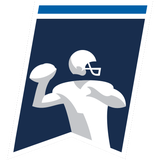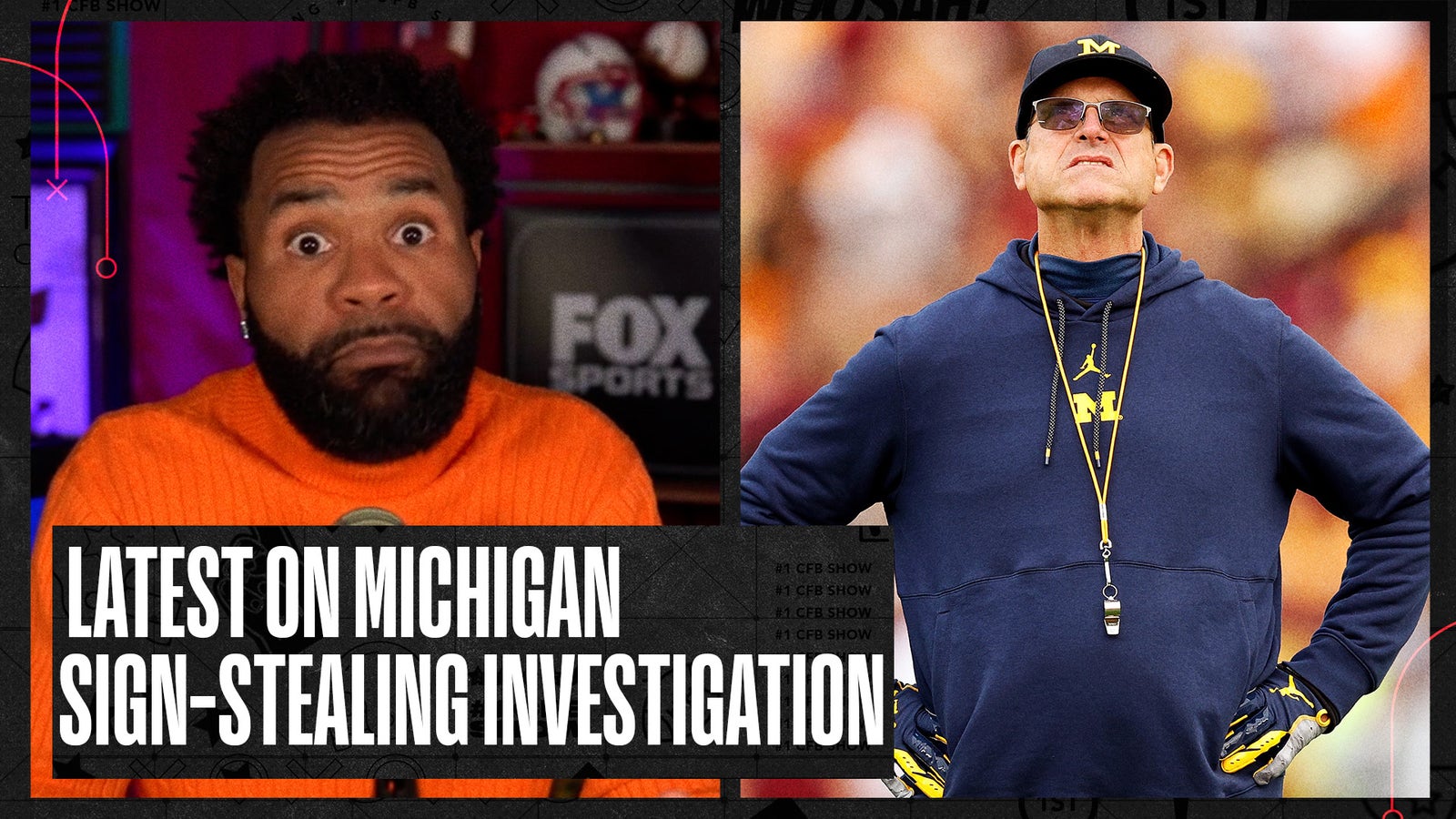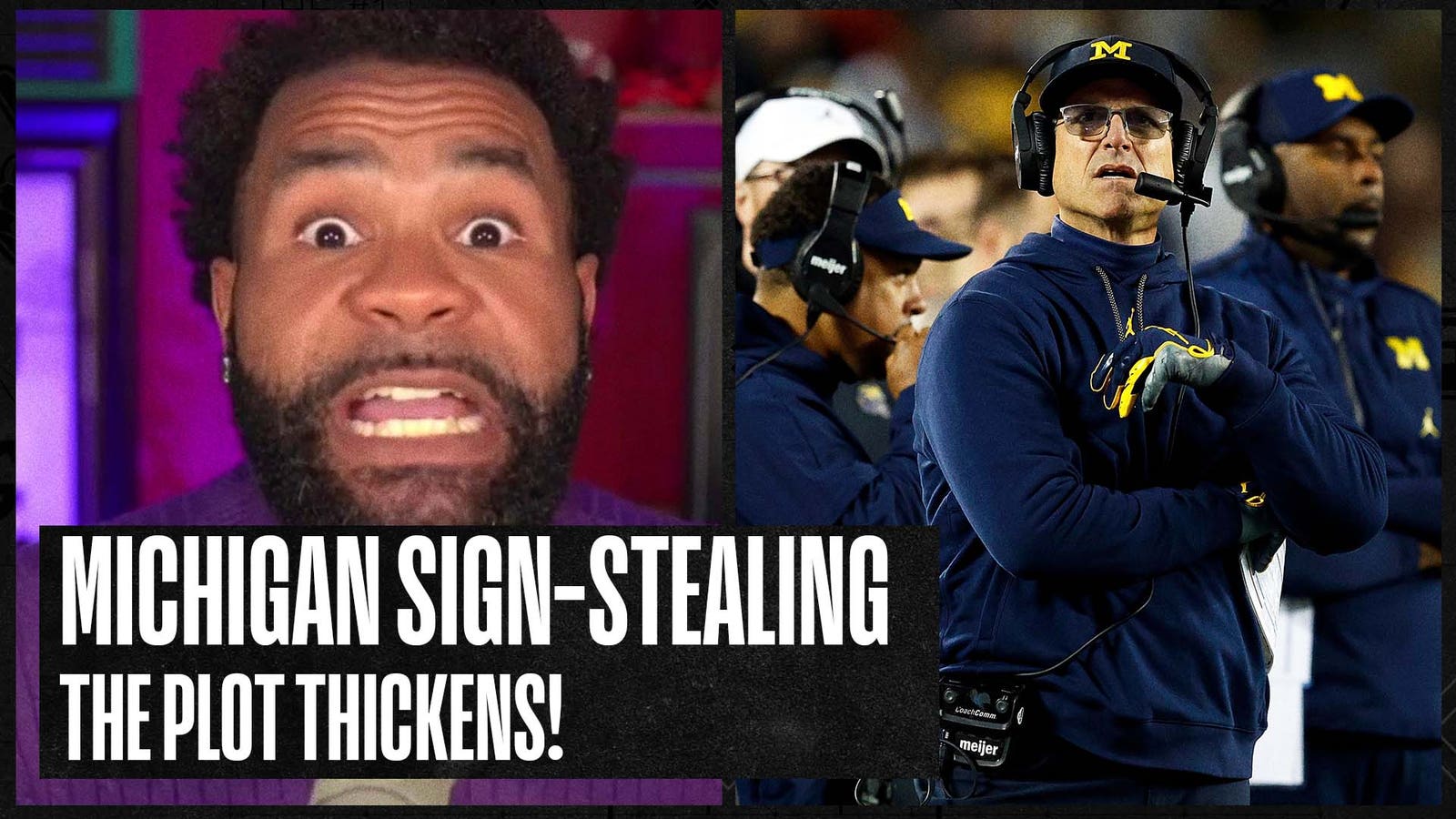Why do coaches continue to send signals using their hands and giant posters of pop culture figures?
Why do coaches still use phones to talk to players from the booth instead of showing them the game on a tablet while talking to them through a headset?
Why can opposing teams still steal each other’s signals?
These are all questions that have been the subject of discussions about the rules governing the sport over the past three weeks.
While the NFL The NCAA has been using headset-to-headset audio technology since 1994 and has had tablets on the field since 2014, but it has been slow to adapt to the 21st century. Without that technology, coaches use signals to relay play calls to players on the field when running faster offenses. At a slower pace, they even huddle and have players call plays using wristbands.
While the coaches of college football — even those at the Power 5 level — are stuck with laminated sheets of paper and visible pictures held above their heads as they call the next play, wondering why some of the high school players they’re recruiting already have experience using headset-to-headphone communication, as well as tablets on the sideline.
There is no denying that the use of signals to relay play calls has become problematic in recent years. While many play callers use hand signals to call plays on the field and remain competitive, others have had their signals stolen through the practice of in-person spotting and electronic assistance.
Notably, Michigan is embroiled in an NCAA investigation into alleged sign theft that may have spanned the past three years. It involved former Michigan staffer Connor Stalions, who allegedly purchased tickets to both teams’ games. The Big Ten College Football Playoff opponents and potential opponents.
Why Michigan’s investigation could lead to headset communications being integrated into college football
The investigation into Michigan’s alleged sign theft has made CoachComm owner Peter Amos a popular figure, though he was already well-known among football coaches and administrators across the country.
“I look at my business card on my desk here, and it doesn’t have a title,” Amos told FOX Sports.
Such is CoachComm’s thirty-year reputation for service and technology development in the industry. Based in Auburn, Alabama, some variation of the company’s products is used by 97 percent of FBS programs and more than a thousand high schools. They even power baseball and softball programs.
“We’ve been around for 32 years now,” Amos said. “And we’ve made it our mission to create unique products for coaches, or for people who, before that, were using headsets for airplanes and running them on the ground for coaches.”
Most FBS and FCS programs use CoachComm’s X-System headsets, also known as “Coach X,” for their games, and nearly all are interested in a technology the company is creating called X-System Player, or “Player X,” which would allow for communication between coach and player.
“I would just describe it as the system that has been a success with coaches,” he said. “When you add the player element, it doesn’t add any additional frequency beyond what we’re already using.”
There is also proof of this. In 2021, CoachComm equipped Grambling State And South with “Player X” for the Bayou Classic.
Not only was communication in this game seamless for both teams, but Amos and CoachComm got to see how coaches use “Player X” to their advantage.
“What we saw in the Bayou Classic in 2021 was a game call followed by some callbacks,” he said. “A game call and a little bit of coaching.”
THE American Football League This also adds evidence to Amos’ observation, as coaches in that league have used CoachComm’s technology not only to call plays, but also to emphasize certain aspects of the game to players wearing the headsets on offense and defense.
Other FBS programs have also used CoachComm in practice, Amos told me.
So why don’t we see it used more in games? The cost and potential competitive disadvantages it could cause are reasons that have been put forward. Although the competitive disadvantages caused by stealing signs make this notion slightly humorous.
Some teams will get to experiment with Player X, as well as tablets and even wearables for the first time during the upcoming bowl season (excluding the College Football Playoff), according to CBS Sports. There are also significant costs associated with acquiring the technology. The cheapest headset package on CoachComm’s website, “Cobalt,” costs $599 per coach.
The technological rule change would have to go through NCAA processes, although it wouldn’t take long to implement.
“It would probably take us a couple of weeks to ship any quantity, even for a conference,” Amos told me. “So about two weeks. But the good news about what we’ve built is it’s just a miniaturized trainer belt pack that you put in a headset. That means the people and the trainers who are using it know how it works, know how it works. It’s not new. It’s just smaller. And so it’s really going to integrate into their workflow very quickly.”
RJ Young is a national college football writer and analyst for FOX Sports and the host of the podcast “The number one show in college football.” Follow him on Twitter at @RJ_Young And Subscribe to “The RJ Young Show” on YouTube.

Learn more about college football Follow your favorites for gaming updates, news, and more


